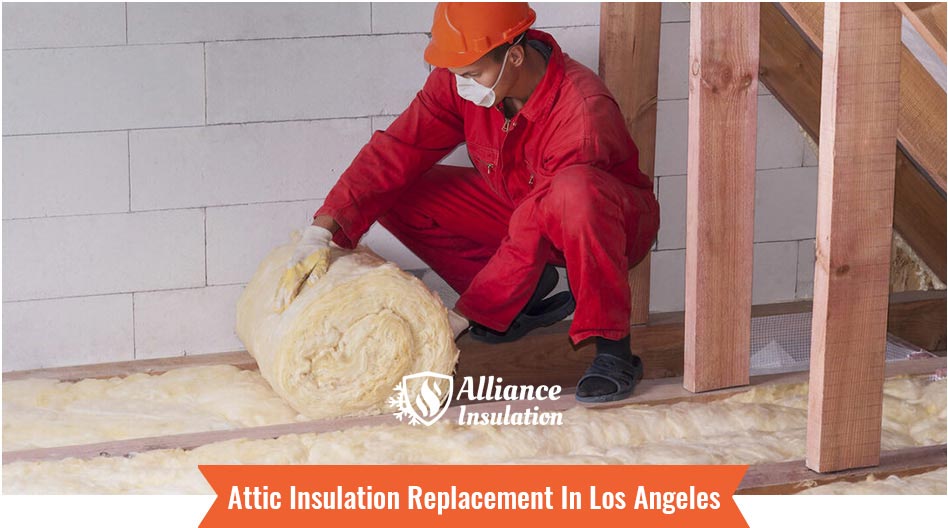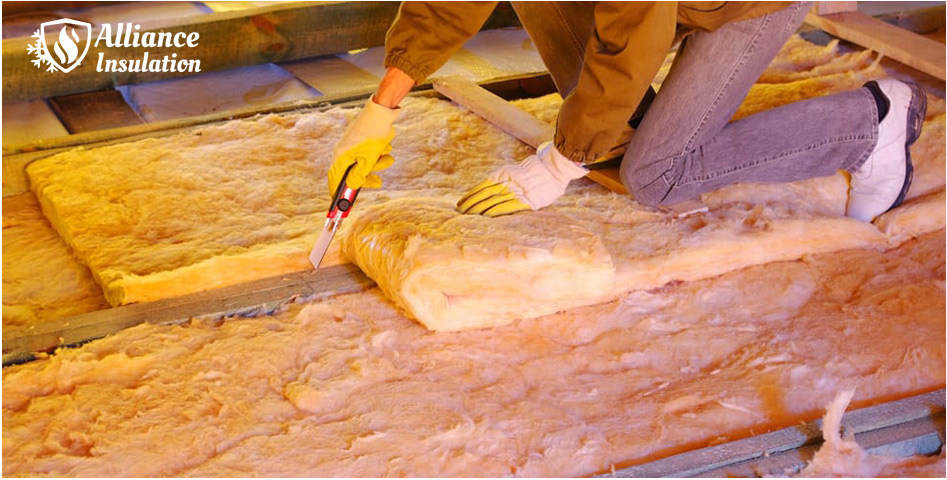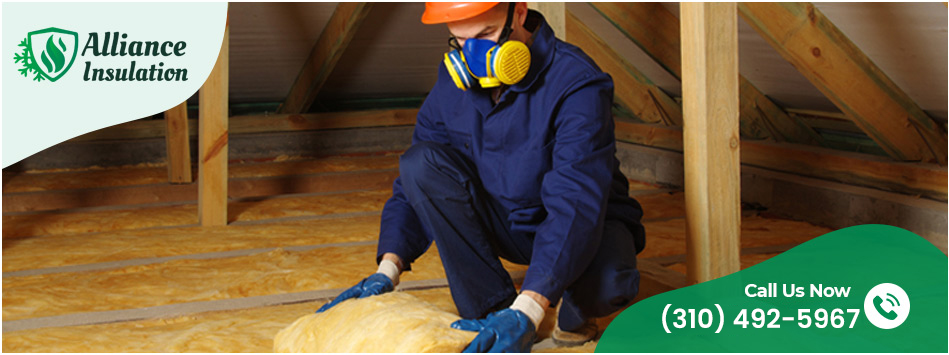
Attic Insulation Replacement in Los Angeles
Attic insulation replacement in Los Angeles is a vital home improvement task necessary for various reasons. Over time, insulation can deteriorate, become less effective, or suffer damage from pests, moisture, or mold. In Los Angeles, where temperatures can soar during summer and cool nights prevail, proper insulation is crucial to maintain indoor comfort and energy efficiency.
As a specialized contractor for attic insulation replacement in Los Angeles, we offer a range of services tailored to attic insulation replacement. Get our efficient solutions for optimal thermal resistance, reducing energy costs, preventing heat transfer, and enhancing the overall comfort and sustainability of homes in the Los Angeles area.
When Do You Need Attic Insulation Replacement?
So, when should you get professional attic insulation replacement in Los Angeles? Attic insulation replacement is usually required under certain circumstances. Here are some situations when it may be necessary:
Age and deterioration
Insulation materials can degrade over time, losing their effectiveness and reducing energy efficiency. If your attic insulation is old and showing signs of wear, such as crumbling, settling, or compacting, it may be time for a replacement.
Pest or animal damage
Attics are susceptible to infestations by pests or animals that can damage insulation. If you notice signs of pest activity or if animals have made nests in your attic, it’s important to inspect the insulation for damage and replace it if necessary.
Moisture or water damage
Excessive moisture, leaks, or water damage in the attic can compromise insulation effectiveness. Wet insulation can harbormold and mildew, leading to health issues and further deterioration. In such cases, removing and replacing the affected insulation is crucial.
Home renovation or remodeling
If you’re planning a major renovation or remodeling project that involves work in the attic, it’s a good opportunity to assess the condition of the insulation. Upgrading or replacing the insulation during the project can improve energy efficiency and ensure compliance with current building codes.
Components We Help You to Replace
As a professional contractor for attic insulation replacement in Los Angeles, we help you to replace certain key elements of your attic insulation as the need be. Here are some of the key elements that we can replace:
| Component | Why You Need to Replace? |
|---|---|
| Insulation Material | The insulation material itself can deteriorate over time or become damaged due to various factors such as moisture, pests, or wear and tear. Fiberglass batts, blown-in cellulose, spray foam, or other insulation types may require replacement if they have lost their effectiveness or have been compromised. |
| Vapor Barrier | A vapor barrier is a protective layer that prevents moisture from entering the insulation. Over time, it may degrade or become damaged. If the vapor barrier is compromised, it can lead to moisture-related issues, such as mold growth or reduced insulation performance, necessitating its replacement |
| Air Sealing Components | Along with insulation, proper air sealing is essential to maintain energy efficiency. Gaps, cracks, or poorly sealed areas can allow air leakage, reducing the effectiveness of insulation. Weatherstripping, caulking, or foam sealants used for |
| Ventilation System | Attic ventilation helps regulate temperature and moisture levels. Insufficient or malfunctioning ventilation can impact the performance of insulation and lead to problems like condensation or excessive heat buildup. Ventilation components, such as soffit vents, ridge vents, or exhaust fans, may require replacement or maintenance over time |
Rules and Regulations to Follow During Attic Insulation Replacement
When undertaking attic insulation replacement in Los Angeles, it’s important to adhere to relevant rules and regulations to ensure compliance and safety. Here are some key guidelines to follow

The California Building Code, 2022
The California Building Code (CBC) provides guidelines and requirements for attic insulation in the state. Here are some key provisions outlined in the CBC related to attic insulation.
R-Value Requirements
The CBC specifies minimum R-value requirements for attic insulation based on the climate zone. R-value is a measure of thermal resistance, indicating the insulation’s ability to resist heat transfer. Different climate zones in California have varying R-value requirements to ensure energy efficiency and occupant comfort.
Installation Standards
The CBC provides installation standards for attic insulation. These standards cover aspects such as proper coverage, uniformity, and installation techniques to achieve effective thermal insulation. It includes guidelines for insulation materials like fiberglass, cellulose, spray foam, or mineral wool.
Vapor Barrier
The CBC addresses the use of vapor barriers in attic insulation. It specifies when and where vapor barriers are required to control moisture and prevent condensation within the insulation system. The code provides guidance on vapor barrier materials, placement, and installation techniques.
Ventilation
Proper attic ventilation is essential for moisture control and to maintain the longevity and performance of insulation. The CBC includes requirements and standards for attic ventilation systems, including provisions for soffit vents, ridge vents, gable vents, or powered attic fans
Fire Safety
The CBC addresses fire safety measures related to attic insulation. It specifies fire-resistant insulation materials, fire-blocking requirements, and other fire protection provisions to ensure the safety of occupants and limit the spread of fire.
Title 24 of the California Energy Commission (CEC)
Title 24 is a set of energy efficiency standards established by the California Energy Commission (CEC) to promote energy conservation in buildings. It includes specific requirements for attic insulation to enhance energy efficiency. Here are some key energy requirements for attic insulation set forward in Title 24:
Prescriptive R-Value
Title 24 provides prescriptive R-value requirements for attic insulation based on climate zones. The R-value specifies the level of thermal resistance required for different areas. The higher the R-value, the better the insulation’s ability to resist heat transfer. The specific prescriptive R-values for attic insulation vary depending on the climate zone and whether it is new construction or retrofitting an existing building
Fenestration U-factor
Title 24 also addresses the U-factor requirements for fenestration (windows, skylights, etc.) in relation to attic insulation. The U-factor measures the rate of heat transfer through a window or door assembly. By establishing maximum U-factor limits for fenestration, Title 24 aims to minimize heat gain or loss through windows, complementing the insulation’s effectiveness.
Whole-House Performance Approach
In addition to prescriptive requirements, Title 24 allows compliance through a Whole-House Performance approach. This approach considers the overall energy efficiency of the entire building, including the attic insulation, to meet specific energy performance targets. It provides flexibility by allowing trade-offs between different energy efficiency measures.
Air Sealing
While not specific to attic insulation, Title 24 emphasizes the importance of air sealing in the building envelope. Effective air sealing reduces air leakage, enhancing the performance of insulation and improving energy efficiency. The standards outline requirements and techniques for air sealing measures throughout the building, including the attic area.
Handling Insulation Material with Asbestos
In Los Angeles and throughout California, the laws and regulations governing the removal and disposal of asbestos-containing materials, including attic insulation, are primarily governed by the California Division of Occupational Safety and Health (Cal/OSHA) and the California Environmental Protection Agency (CalEPA). Here are some key laws and regulations related to replacing asbestos attic insulation in Los Angeles
Cal/OSHA Asbestos Standard
Cal/OSHA has established strict regulations under Title 8, Section 1529 of the California Code of Regulations. This standard outlines the requirements for the safe removal, handling, and disposal of asbestos-containing materials, including attic insulation. It covers worker protection, containment procedures, and disposal practices to minimize the release of asbestos fibers into the environment
At Alliance Insulation we follow all the above rules and regulations when we are dealing with attic insulation replacement in Los Angeles
Faq’s
The duration of attic insulation replacement can vary depending on factors such as attic size, project complexity, insulation type, and contractor efficiency. Generally, the process takes a few hours to a few days. Assessing the attic and planning the project may take a couple of hours. Preparing the attic and removing existing insulation can add additional time. The installation of new insulation is usually the most time-consuming step.
In Los Angeles, permits are generally not required specifically for attic insulation replacement or upgrading. According to the Los Angeles Department of Building and Safety (LADBS), routine maintenance or repairs, including insulation replacement, do not necessitate obtaining permits.
However, it’s important to note that if your insulation replacement project involves other significant renovations or modifications to the building, such as structural changes or altering the electrical or plumbing systems, separate permits may be required for those specific aspects of the project.
Building codes and energy efficiency standards may vary depending on your location. We have a good understanding of these regulations and ensure that the insulation replacement meets or exceeds the required standards to ensure compliance.
Get a Free Quote


